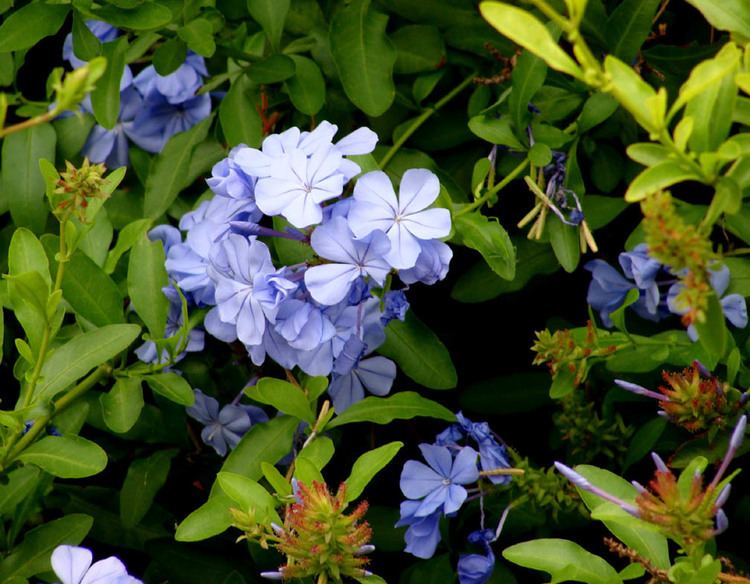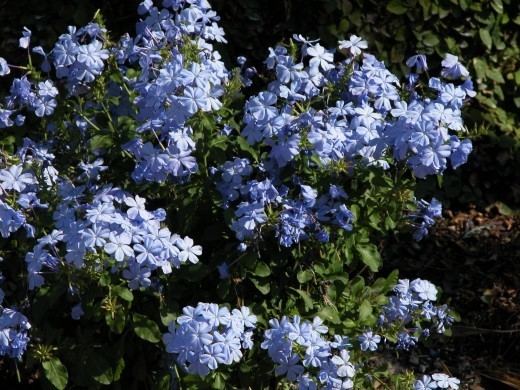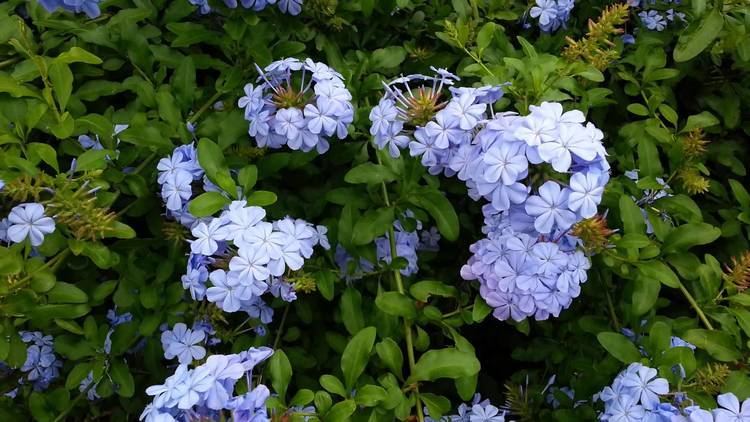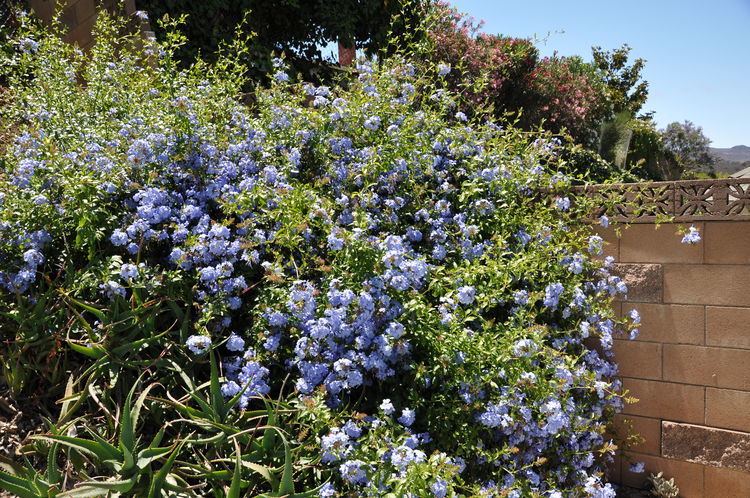Rank Species | Genus Plumbago Higher classification Leadwort | |
 | ||
Similar Leadwort, Plumbaginaceae, Ceratostigma, Plumbago zeylanica, West Indian Lantana | ||
Plumbago auriculata cape plumbago
Plumbago auriculata (common names blue plumbago, Cape plumbago or Cape leadwort), syn. P. capensis, is a species of flowering plant in the family Plumbaginaceae, native to South Africa.

It is an evergreen shrub, often grown as a climber, ascending rapidly to 6 m (20 ft) tall by 3 m (10 ft) wide in nature, though much smaller when cultivated as a houseplant. It has light blue to blue flowers and also variations with white (P. auriculata var. alba) or deep blue (P. auriculata 'Royal cape') flowers. The leaves are a glossy green and grow to 5 cm (2 in) long. Plumbago grow best in full sun to part shade.

The specific epithet auriculata means "with ears", referring to the shape of the leaves.
In temperate regions it may be grown outside in frost free areas, otherwise under glass. The species and the white-flowered form P. auriculata f. alba have both gained the Royal Horticultural Society's Award of Garden Merit.

Plumbago auriculata is a medicinal herb plant, the name has a root from the Latin word plumbum, meaning lead, because it has some pharmaceutical effects for lead poisoning (Asha Saji, V. T. Antony,2015) . Also its used as a phytoremediator for lead and cadmium.

Medicinal uses and phytochemistry:
This plant usually used in traditional medicine in India, like treating wounds, broken bones, and headache. Many secondary metabolites have been discovered and isolated from Plumbago auriculata such as Plumbagin, palmitic acids.

Propagation: Plumbago auriculata could be propagated sexually by seeds and asexual by cutting in summer. Its need well aerated soil and light. it is also preferring the acidic soil.
watering: Plumbago auriculata, have to stages for watering, the first at the beginning of growth, the soil should be always watered, once the plant is standing well, it should be watered in needs only.
Nutrition: Plumbago auriculata ma suffer from lacking some nutrients, so it should be fertilized with the appropriate nutrients.
